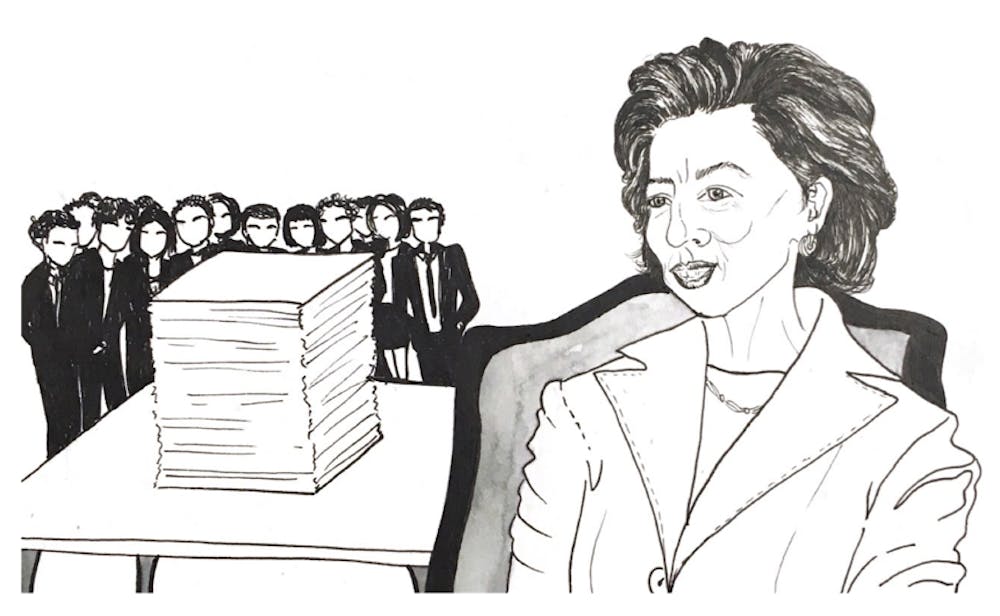The October findings of Gov. Gina Raimondo’s Working Group for Gun Safety — the 43-member collective that worked to study gun violence in Rhode Island for over six months — are informing many of the Governor’s conversations in preparation for the start of the January legislative session, wrote Deputy Press Secretary of the Governor’s Office Audrey Lucas in an email to The Herald.
The group was first convened by the Governor in February following the Parkland Florida shooting and included health professionals, law enforcement, educators and other community members.
Members met five times over several months and worked across six different subcommittees to examine current gun safety measures and to provide future suggestions for the Governor, said Associate Professor of Health Services, Policy and Practice, Emergency Medicine and working group co-chair Megan Ranney.
“This task force was very focused,” said James Manni, town manager of Narragansett and co-chair of the working group. “We made some very common-sense, specific recommendations.”
In its October Final Report, the working group advised stricter regulation of military-style assault weapons and a ban on high-capacity magazines, ghost guns and 3D-printed guns.
Ghost guns — guns that are made at home as to avoid being traced — were identified as a potential loophole in R.I. law. These guns can be purchased 80 percent completed and are later finished by obtaining the frame or receiver separately, which is where the serial number of the gun is printed, Manni said. While the task force initially began studying ghost guns as a possibility in Rhode Island, the state had its first documented case when a biker gang was arrested for dealing ghost guns in late May, he added.
While there are over 50 laws in the state regarding guns, some were found to be dated, with some even originating in the 1960s, Manni said.
Ranney does not find the proposal to ban guns to be controversial because the report is comprised of “consensus recommendations” that “came out of the experiences of many gun owners.” She added that nearly half of the working group members were gun owners who wanted to find common sense resolutions.
Members of the working group also provided mental health resources, data collection of gun-related incidents and school-specific recommendations. “(What) really hit home to me was listening to the educators’ stories and the fear that they live through in their schools worrying about a mass shooting and what they would do. … As someone who works in the healthcare field, I see the effects of guns in almost every shift that I work in the ER, but I don’t work as a teacher, and I don’t experience that … first-hand fear of teachers and students,” Ranney said. She added that the report recommended increasing the number of counselors and school psychologists as well as the number of non-violence and anti-bullying programs.
Jennifer Boylan of the gun prevention advocacy group Mom’s Demand Action was enthusiastic about the working group’s final report and hopes that the Governor will continue to prioritize gun safety. “We’re excited about the whole process … and her commitment to working on this problem.”
Still, Boylan sees opportunities for the state legislature to tighten gun safety measures. While Raimondo signed an executive order in August barring firearms from Pre-K to 12 schools back in August, Boylan argues that criminal penalties need to be formalized by the state legislature. Boylan also hopes Rhode Island can raise the minimum age to buy an assault weapon from 18 to 21, after a bill with that proposal did not make it out of committee last spring.
“The Governor looks forward to working with her colleagues in the General Assembly during the next session to pass common sense, meaningful legislation to keep Rhode Islanders safe,” Lucas said.
Looking forward, Ranney acknowledges that reducing gun violence in the state “will not happen overnight” because “guns are part of the culture of the United States.”





